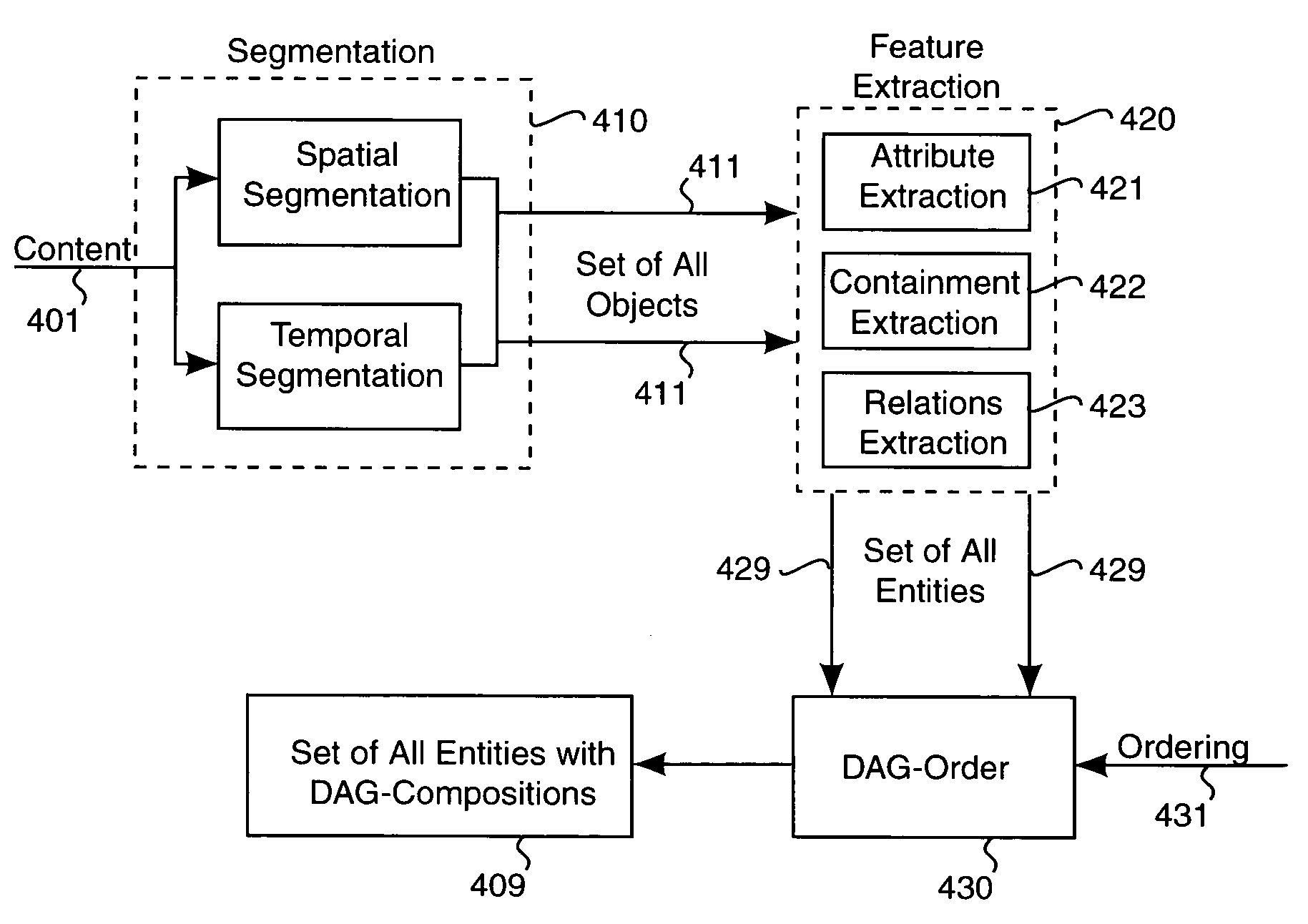Method for representing and comparing multimedia content according to rank
a multimedia content and rank technology, applied in the field of multimedia content processing, can solve the problems of difficult to obtain high-level interpretation of objects or multimedia content, difficult to effectively combine this feature of objects with other low-level features, and limitation in the level of representation, so as to facilitate multiple interpretations and compare low complexity
- Summary
- Abstract
- Description
- Claims
- Application Information
AI Technical Summary
Benefits of technology
Problems solved by technology
Method used
Image
Examples
Embodiment Construction
Introduction
[0031]We describe methods for representing and comparing multimedia content according to a ranking of the content. The methods are based a new generic data structure, which includes a directed acyclic graph (DAG) representation. In the following, we describe objects in our scheme and the advantages of the DAG representation. It is the DAG representation that allows the scheme to infer multiple interpretations of multimedia content, yet still be efficient in the comparison with other multimedia content. In fact, when we score with respect to a probability likelihood function, the computations are not only tractable, but also optimal.
[0032]Besides describing the generic data structure, we also describe three important functions that allow us to realize this efficient representation and perform comparisons. The first function will be referred to as a DAG-Coder. The DAG-Coder is responsible for taking individual content entities contained in the object and producing a DAG-Co...
PUM
 Login to View More
Login to View More Abstract
Description
Claims
Application Information
 Login to View More
Login to View More - R&D
- Intellectual Property
- Life Sciences
- Materials
- Tech Scout
- Unparalleled Data Quality
- Higher Quality Content
- 60% Fewer Hallucinations
Browse by: Latest US Patents, China's latest patents, Technical Efficacy Thesaurus, Application Domain, Technology Topic, Popular Technical Reports.
© 2025 PatSnap. All rights reserved.Legal|Privacy policy|Modern Slavery Act Transparency Statement|Sitemap|About US| Contact US: help@patsnap.com



